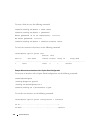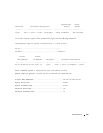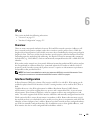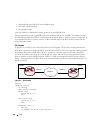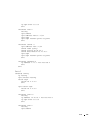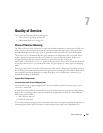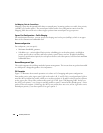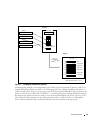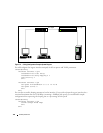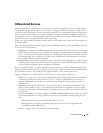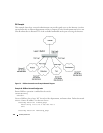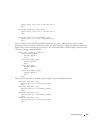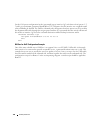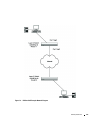
140 Quality of Service
CoS Mapping Table for Trusted Ports
Mapping is from the designated field values on trusted ports’ incoming packets to a traffic class priority
(actually a CoS traffic queue). The trusted port field-to-traffic class configuration entries form the
Mapping Table the switch uses to direct ingress packets from trusted ports to egress queues.
Egress Port Configuration—Traffic Shaping
For unit/slot/port interfaces, you can specify the shaping rate for the port (in Kbps), which is an upper
limit of the transmission bandwidth used.
Queue configuration
For each queue, you can specify:
• Minimum bandwidth guarantee
• Scheduler type – strict/weighted: Strict priority scheduling gives an absolute priority, with highest
priority queues always sent first, and lowest priority queues always sent last. Weighted scheduling
requires a specification of priority for each queue relative to the other queues, based on their minimum
bandwidth values.
Queue Management Type
The switch supports the tail drop method of queue management. This means that any packet forwarded
to a full queue is dropped regardless of its importance.
CLI Examples
Figure 7-1 illustrates the network operation as it relates to CoS mapping and queue configuration.
Four packets arrive at the ingress port 1/g10 in the order A, B, C, and D. You’ve configured port 1/g10 to
trust the 802.1p field of the packet, which serves to direct packets A, B, and D to their respective queues
on the egress port. These three packets utilize port 1/g10’s 802.1p to COS Mapping Table. In this case,
the 802.1p user priority 3 was set up to send the packet to queue 5 instead of the default queue 3. Since
packet C does not contain a VLAN tag, the 802.1p user priority does not exist, so Port 1/g10 relies on its
default port priority (2) to direct packet C to egress queue 1.



